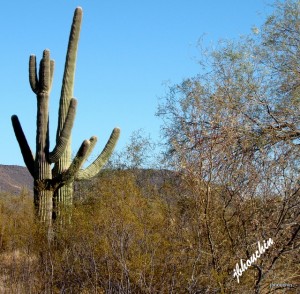 The Sonoran Desert takes up over 100,000 square miles and covers parts of two states and two countries: the southern parts of Arizona and California in the United States and large parts of the states of Sonora, Baja California Norte and Baja California Sur in Mexico.
The Sonoran Desert takes up over 100,000 square miles and covers parts of two states and two countries: the southern parts of Arizona and California in the United States and large parts of the states of Sonora, Baja California Norte and Baja California Sur in Mexico.
You’ve probably read that the Sonoran Desert is one of the most wildly diverse deserts in the world, but it is also one of the most ecologically balanced deserts in the world. 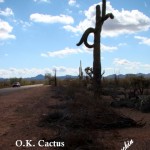
It has to be. The diversity of fauna and flora endemic to this unique region are all dependent on each other’s existence to survive the harsh climate to which the area is subjected; mainly the scarcity of precipitation, extreme dry heat, and spurious winds that can relocate anything not inherently created to withstand the sudden onslaughts.
Endemic species of the Sonoran Desert—and these figures are approximate to the least probable numbers—include 60 species of mammals, 20 of amphibians, 100 of reptiles, 350 bird species and over 2000 species of plants, about a quarter of which provide a fruit, a vegetable or a liquid from which man or animal can survive. 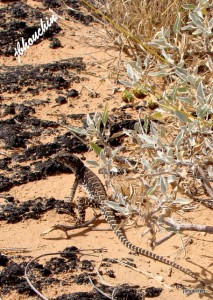
Plus, there are the three main species of “nurse” trees, so called because they provide almost everything it takes to survive in the desert for hundreds of species of plants and animals, starting with shade cover and wind protection from their low growing branches.
In addition to the direct part they play in the survival of over 500 known species of plants and animals, each of these trees have uses for humans as well.
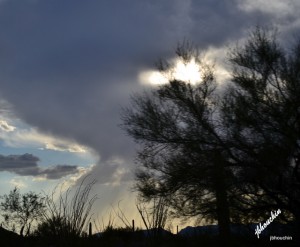 The Desert Ironwood (Palo Fierro in Spanish) grows only in the Sonoran Desert. It provides shelter and creates a pea pod that serves as food for many animals. This tree is the tallest desert tree, growing up to 30 feet high and can, though rare, live for up to 1,500 years! Ironwood from this tree is so dense and heavy it will sink in water. The Seri Indians make elaborate carvings from this wood. You’ve seen such carvings displayed by the beach vendors and in curio shops all over Rocky Point. Puerto Peñasco has five native Ironwood carving masters who teach younger artisans and provide many of the carvings you see around town.
The Desert Ironwood (Palo Fierro in Spanish) grows only in the Sonoran Desert. It provides shelter and creates a pea pod that serves as food for many animals. This tree is the tallest desert tree, growing up to 30 feet high and can, though rare, live for up to 1,500 years! Ironwood from this tree is so dense and heavy it will sink in water. The Seri Indians make elaborate carvings from this wood. You’ve seen such carvings displayed by the beach vendors and in curio shops all over Rocky Point. Puerto Peñasco has five native Ironwood carving masters who teach younger artisans and provide many of the carvings you see around town.
Legend is that carvings from the Desert Ironwood bring good fortune and long life. High demand for this art is causing illegal harvesting from the trees at the rate of 17% per year which is putting the delicate ecosystem of the Sonoran Desert at great risk.
Such cherished plants as the Giant Saguaro Cactus and the Organ Pipe Cactus would be in jeopardy without the nursing of the Desert Ironwood during their infancy. 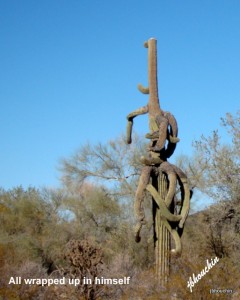
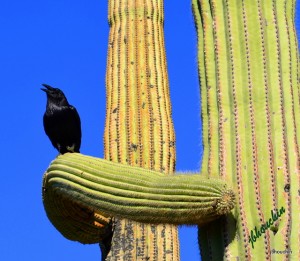 Mesquite is the second of the nurse trees and plays a large part in the survival of saguaro and organ pipe cacti and other succulents. Its root system can borough down 30 feet with shallower radial roots projecting as far wide as the tree is tall (28’ to 30’). It produces a seed pod that provides nourishment to dozens of wild life species. In fact, it makes up 80% of the coyotes’ diet during season. Native Americans used mesquite pods as a staple as well; making tea, syrup, ground meal (called pinole) from various parts. They made baskets, fabrics and medicine from the bark. And even today, you can enjoy the succulent flavor of a juicy steak or chicken broiled over the slow burning mesquite charcoals!
Mesquite is the second of the nurse trees and plays a large part in the survival of saguaro and organ pipe cacti and other succulents. Its root system can borough down 30 feet with shallower radial roots projecting as far wide as the tree is tall (28’ to 30’). It produces a seed pod that provides nourishment to dozens of wild life species. In fact, it makes up 80% of the coyotes’ diet during season. Native Americans used mesquite pods as a staple as well; making tea, syrup, ground meal (called pinole) from various parts. They made baskets, fabrics and medicine from the bark. And even today, you can enjoy the succulent flavor of a juicy steak or chicken broiled over the slow burning mesquite charcoals!
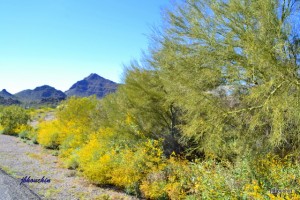 Palo Verde is the third nurse tree and is the primary protector of the Saguaro Cactus. It’s also the most plentiful of the three nurse trees. The seed pods are a great source of nutrition for wild life. The seeds and flowers were a food source of the Seri Indians who also made necklaces from the seeds and red dye from the flowers.
Palo Verde is the third nurse tree and is the primary protector of the Saguaro Cactus. It’s also the most plentiful of the three nurse trees. The seed pods are a great source of nutrition for wild life. The seeds and flowers were a food source of the Seri Indians who also made necklaces from the seeds and red dye from the flowers.
If you found these facts interesting and would like more articles on the many other aspects of the unique Sonoran Desert, please let us know in the comments area and we’ll be happy to create a regular series targeting the more interesting plants and animals of this great desert environment. 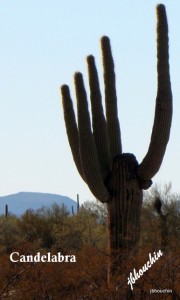
If this article wets your appetite to learn more about the Sonoran Desert, especially how it was formed in relation to the geologic time versus our notion of time you can read an article “The Geologic Origin of the Sonoran Desert” by Robert Scarborough that appears on the Arizona-Sonora Desert Museum website ( www.desertmuseum.org ). You can search any subject on the Sonoran Desert including over 14,000 indexed images.
Another informative, well organized website about the desert is www.desertusa.com. This is a great well indexed (read: easily searchable) site that also publishes a free newsletter that’s always full of interesting and seasonally timely articles about desert fauna and flora.
This blog is brought to you by The Sonoran Resorts Sales Group, Jim Ringquist, Director of Sales.


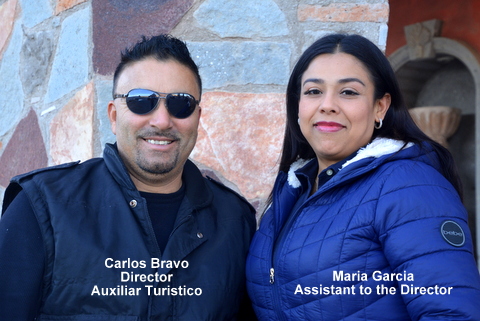


Enjoyed the Sonoran Desert article and would like to see more. Thank you.
Jim – that was a great article. People need to know more about our desert.
Jim Marion
OH GOD !!! Do I miss Arizona. I wish I can bring part of it here to Iowa.
Enjoyed the article – hope you print more like it